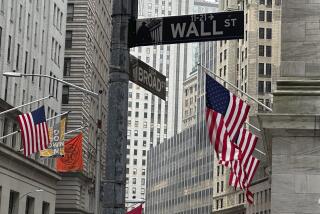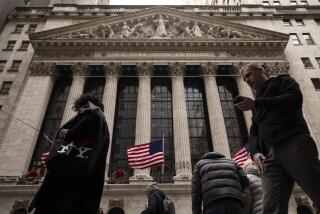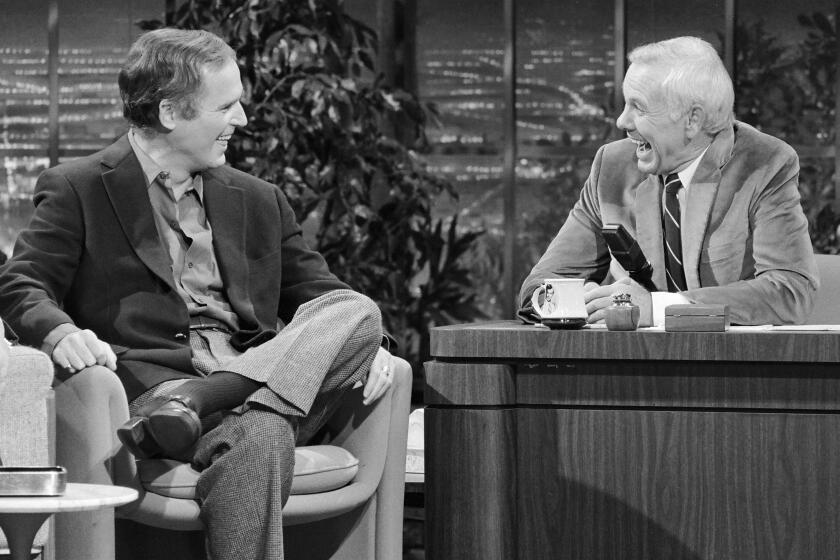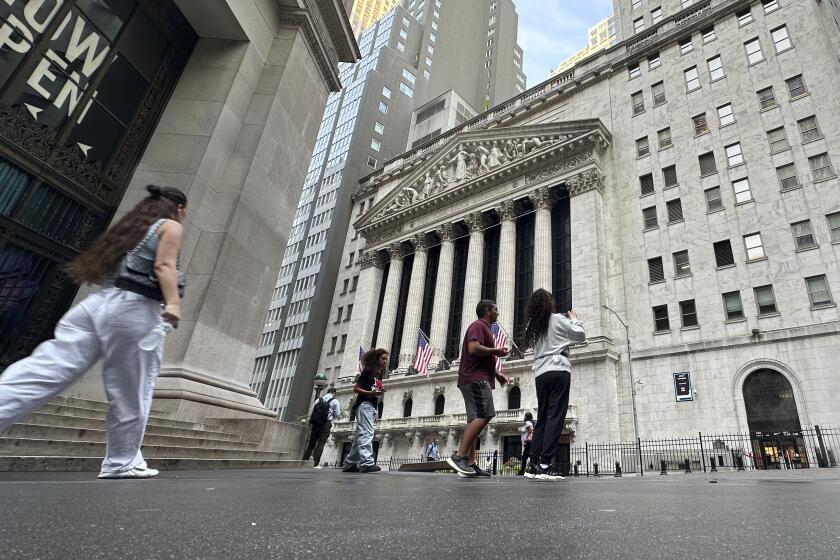Stocks close higher as debt ceiling fears recede
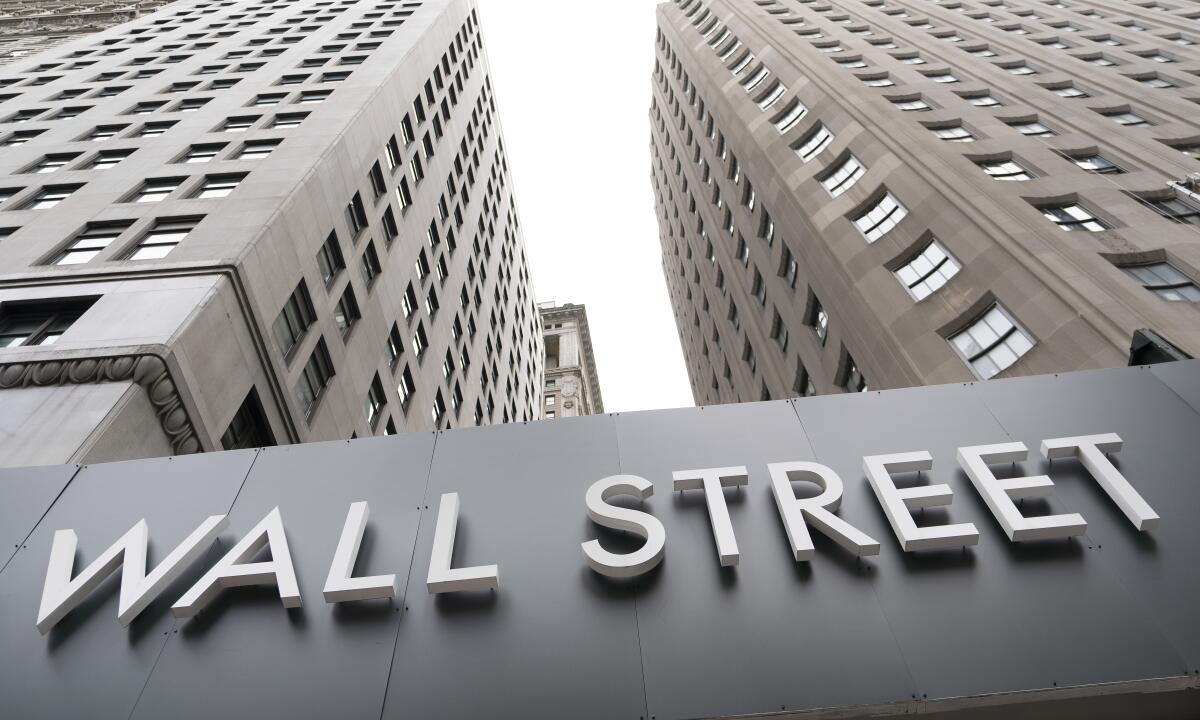
Technology companies helped lift stocks on Wall Street broadly higher Thursday as investors welcomed the end of a standoff in Congress over the federal debt ceiling.
An agreement to temporarily extend the government’s borrowing authority into December gives lawmakers more time to reach a permanent solution, averting for now an unprecedented federal default that experts say would have devastated the economy.
The Standard & Poor’s 500 rose 0.8%, its third straight gain. Nearly 80% of stocks within the benchmark index gained ground. The Dow Jones industrial average rose 1%, while the tech-heavy Nasdaq closed 1.1% higher.
The debt ceiling debate and the potential for an unprecedented federal default are among many concerns that have been weighing on the market. Those worries sent the benchmark S&P 500 swinging between daily gains and losses of more than 1% for four days.
Do you live among million-dollar homes? These 15 L.A. neighborhoods crossed the $1-million threshold
Senate leaders announced an agreement Thursday to extend the government’s borrowing authority into December. The move came a day after Senate Minority Leader Mitch McConnell made an offer that paved the way for the emergency extension of the debt ceiling.
The temporary compromise between Republicans and Democrats may have also helped give investors optimism that Congress can work out compromises in other areas, said Greg Bassuk, chief executive of Axs Investments.
“The fact that it actually got done, we think, frankly, that we are seeing an outsized reaction in the markets today because of the sentiment that, ‘Hey, maybe some more can get done as well,’” he said.
The S&P 500 rose 36.21 points to 4,399.76. The Dow gained 337.95 points to end at 34,754.94, and the Nasdaq added 152.10 points, closing at 14,654.02.
Small-company stocks, a gauge of confidence in economic growth, also notched gains. The Russell 2000 index picked up 35.14 points, or 1.6%, and closed at 2,250.09. Markets in Europe and Asia also closed broadly higher.
Technology stocks powered a big share of the S&P 500’s gains. Apple rose 0.9% and chipmaker Nvidia added 1.8%.
Automakers were big winners among consumer discretionary sector stocks. Ford Motor rose 5.5% and General Motors gained 4.7%.
Health insurers helped lift health sector companies. Humana rose 2.9% while UnitedHealth Group added 2.7%.
Cruise lines were among the market’s decliners. Norwegian Cruise Line fell 2.2% and Carnival slid 1.7%. Royal Caribbean dropped 1.4%.
Happy Masks’ face coverings for kids are a back-to-school sensation amid heightened COVID-19 anxiety — but good luck buying one.
Energy futures prices bounced back after the U.S. Energy Department said it is not planning on tapping oil reserves. The price of U.S. crude oil rose 1.1%.
Bond yields rose. The yield on the 10-year Treasury rose to 1.57% from 1.52% late Wednesday.
COVID-19 continues to hamper the economic recovery after a surge of cases over the summer. Consumer spending and job growth were stunted and supply chain problems crimped operations in a wide range of industries.
More positive news came from Pfizer on Thursday. It asked U.S. regulators to allow use of its COVID-19 vaccine in children ages 5 to 11. The drug developer’s stock rose 1.7%.
Investors received another encouraging piece of news on Thursday after the Labor Department reported that the number of Americans applying for unemployment benefits fell last week for the first time in four weeks. The labor market has been struggling to recover from the pandemic’s initial impact 18 months ago when lockdowns from COVID-19 gutted jobs.
Wall Street will get another snapshot of the job market and its recovery Friday when the Labor Department releases its employment report for September. The employment market’s recovery has been closely watched for any clues on how soon the Federal Reserve will ease its unprecedented support for the markets and economy. Inflation also remains a key concern because persistently high inflation could prompt the central bank to start raising interest rates sooner than expected.
Friday’s jobs report will probably have little effect on the Fed’s plan to start trimming its bond buying and on its timeline to start raising interest rates, said Jason Pride, chief investment officer of private wealth at Glenmede. He said that a lot of the mismatch between a slowdown in employment growth and a rise in job openings is circumstantial, such as people holding off on a return to the workforce to take care of family or learn new skills to find different jobs.
“I don’t think there’s anything that the Fed does with movement in interest rates or bond buying that will change people’s decision as to when they get back to the workforce,” he said. “It’s time to start taking the foot off of the pedal.”
Wall Street could see less volatility once the Fed actually starts trimming its bond purchases, he said, because “people will get comfortable with the pace and they’ll see the markets and economy can handle it.”
More to Read
Inside the business of entertainment
The Wide Shot brings you news, analysis and insights on everything from streaming wars to production — and what it all means for the future.
You may occasionally receive promotional content from the Los Angeles Times.


